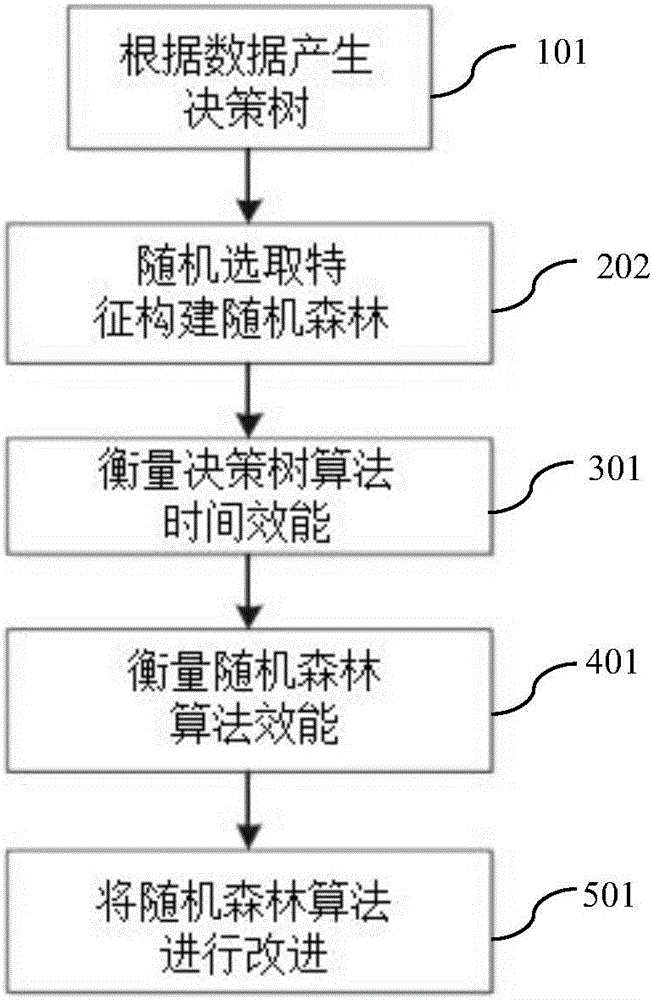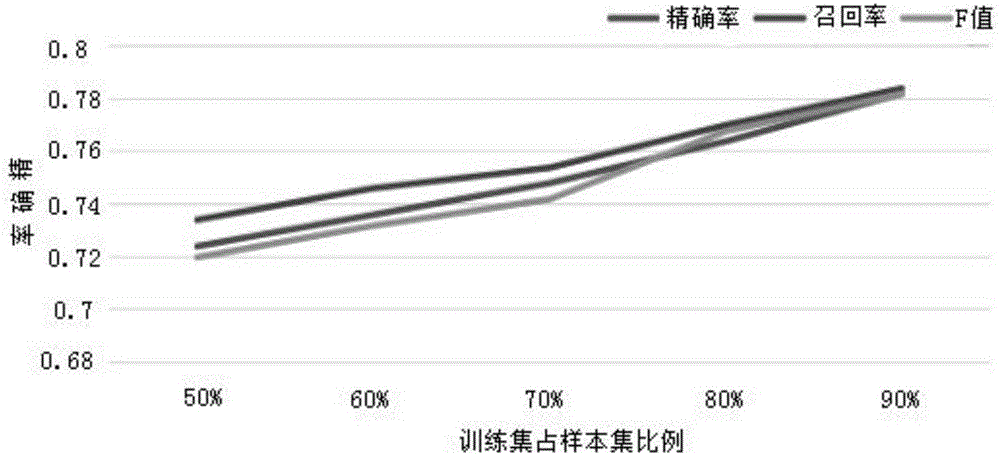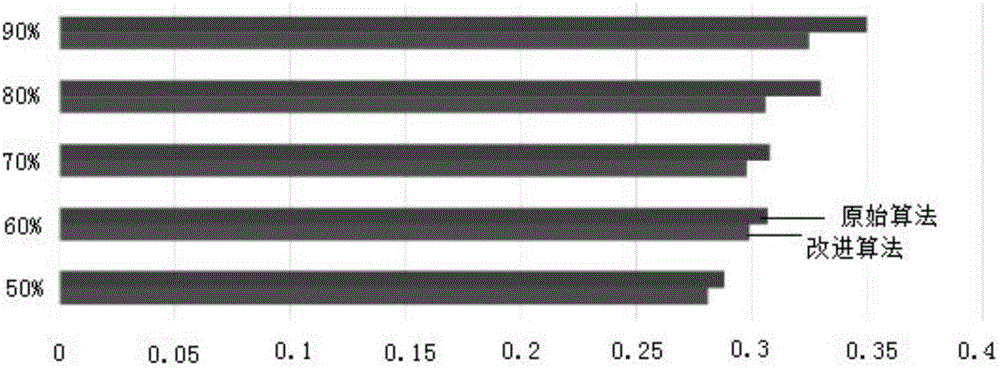Constraint condition-based random forest recommendation algorithm
A random forest and constraint technology, applied in the field of improved random forest recommendation algorithm, can solve the problems of difficult prediction of continuous fields, increased overhead of classification algorithm, and limitation of algorithm memory size.
- Summary
- Abstract
- Description
- Claims
- Application Information
AI Technical Summary
Problems solved by technology
Method used
Image
Examples
Embodiment Construction
[0032] Below in conjunction with accompanying drawing, the present invention is described in further detail:
[0033] Such as figure 1 As shown, it is a schematic diagram of the overall flow of a random forest recommendation algorithm based on constraints in the present invention, including:
[0034] Step 101: Generate a decision tree according to given training data. In this process, the CART algorithm is used to solve the problem of large branch scale and slow modeling of the decision tree generated by the ID3 algorithm and the C4.5 algorithm. A binary recursive segmentation technology is used; in the CART algorithm, the Gini index is used to construct a binary tree. decision tree. The decision tree generated by the CART algorithm is a binary tree with a concise structure. In the CART algorithm, it is mainly divided into two steps: (1) recursively divide the sample for tree building process; (2) use the verification data for pruning. The actual recursive division process...
PUM
 Login to View More
Login to View More Abstract
Description
Claims
Application Information
 Login to View More
Login to View More - R&D
- Intellectual Property
- Life Sciences
- Materials
- Tech Scout
- Unparalleled Data Quality
- Higher Quality Content
- 60% Fewer Hallucinations
Browse by: Latest US Patents, China's latest patents, Technical Efficacy Thesaurus, Application Domain, Technology Topic, Popular Technical Reports.
© 2025 PatSnap. All rights reserved.Legal|Privacy policy|Modern Slavery Act Transparency Statement|Sitemap|About US| Contact US: help@patsnap.com



